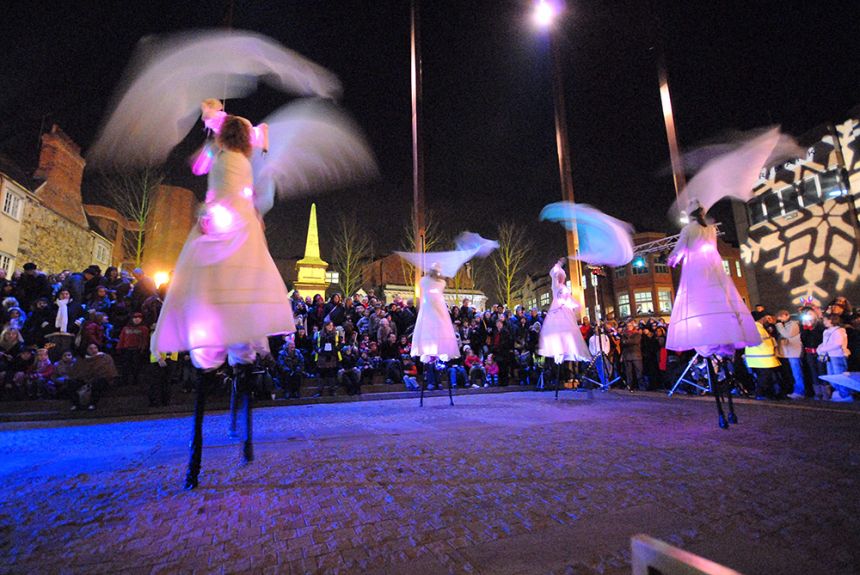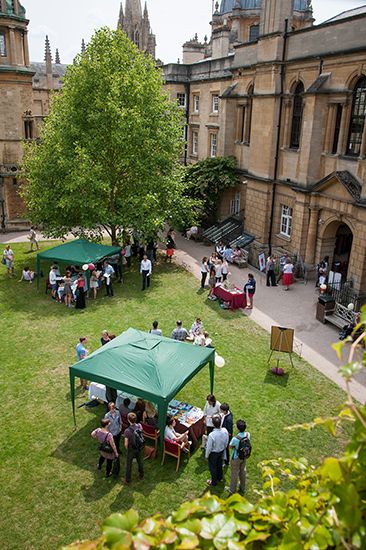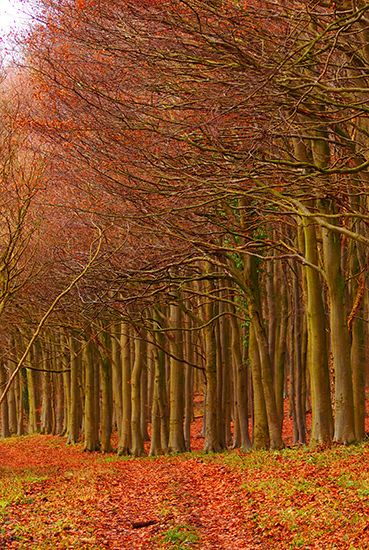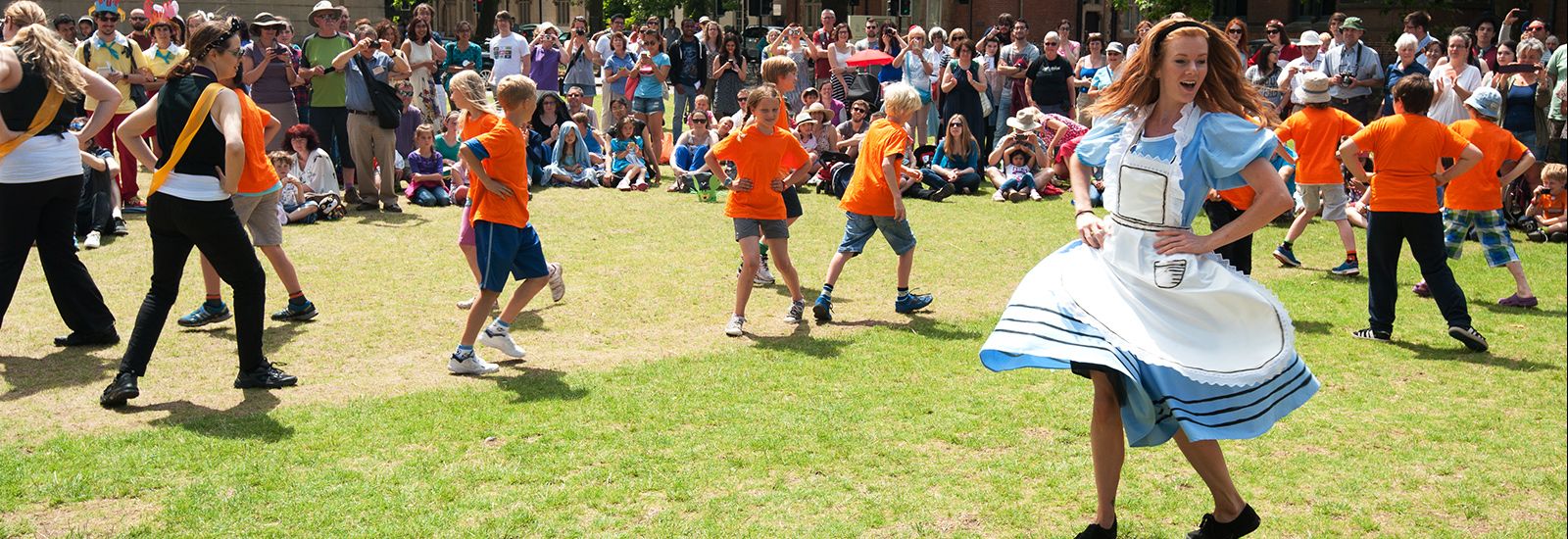
Supporting the community
In September 2013 the University introduced a small community grants scheme. This put on a regular footing the financial support that the University had already been giving to major cultural and other initiatives in the city.
The University puts aside a funding pot of £50,000 a year to support projects and events which celebrate the heritage of Oxford, enhance the experience of its communities and support educational achievement. At the time of writing over 50 local projects have been supported with grants ranging from £500 to £15,000.
Some of the exciting bids that have been successful in 2014–15 include:
Oxford City Christmas Light Festival
This has become the focus of Oxford’s Christmas, with the children’s lantern parade, choirs and live dance events in Broad Street and St Giles’, as well as a host of events at University venues such as the Ashmolean, the Pitt Rivers Museum, the Museum of Natural History, the Bodleian and the Museum of the History of Science. The University has provided a grant for the last three years.
Oxford Open Doors
Every year buildings and spaces across the city, normally private, open their doors for one weekend to wider public. The event has grown to become one of the largest of its kind in the country, with over 20,000 individuals taking part over the September weekend in 2015. The 2015 event was on the theme of books and printing and featured the newly opened Weston Library.
The Story Museum
A magical centre for children of all ages to wander among stories, meet some of their favourite characters and explore writing for its own sake. The annual Alice’s Day has become a fixture in Oxford’s calendar, and the University has supported it over several years.
Yellow Submarine
An award-winning local charity which provides a range of support for children and adults with learning disabilities. The University provided funding for the training of four drivers to set up a community transport hub.
Cowley Road Carnival
From small beginnings the Cowley Road Carnival has become a major summer event on the streets of Cowley, with music, stalls, food and fancy dress. The University supplies a regular funding stream which helps to make the event such a success.66 Men of Grandpont
Marking the anniversary of the First World War, a local group traced the history of the 66 men listed on the Grandpont war memorial and the stories behind them. This led to an exhibition and learning trail, which the University helped to fund.
One year on colleges including St Peter’s, St Hugh’s, St Antony’s, Wolfson, St Stephen’s House, Lincoln and Hertford are now being joined by Nuffield, University College and St Anne’s as well as university space from the ROQ, the Classics Centre and the Careers Service.
The City Council manages the scheme which aims to match up unused space with local groups who might need rehearsal or meeting space. In return students can be offered free tickets for events, or opportunities to workshop with performers.
Feedback from the pilot year was very positive, and it is hoped that more and more of the University’s unique spaces can be made available to the wider community as time goes on.
If you have space that you would like to make available to the scheme contact: community@admin.ox.ac.uk
Oxfordshire has more than 150 environmental community groups, probably the highest concentration in the UK. The University has several hundred environmental researchers, most living somewhere near one of those community groups.
There are many environmental challenges today, both locally and at a global level. The wealth of cutting-edge work being done across the academic, professional and community sectors in Oxfordshire gives good reason for optimism.
Stimulating environmental innovation
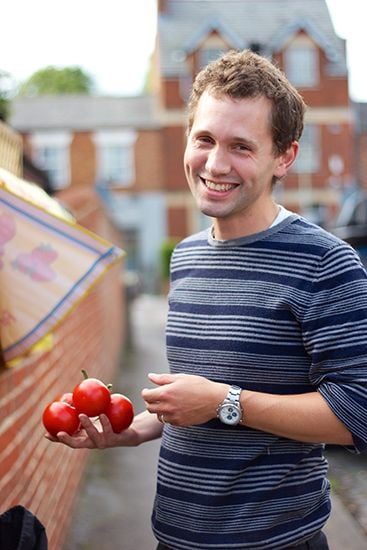
A range of different engagement activities helps to facilitate agile-ox’s work. Whether it is hosting the annual skill-sharing day for Oxfordshire community action groups, bringing together air pollution and low-carbon researchers with local councils, co-ordinating a cycling hackathon or organising high-profile speakers for the local Green Business Breakfasts, agile-ox is catalysing ‘bring and share’.
The purpose is to help stimulate environmental innovation of economic and social worth, from the research bench to the village hall – and places in between. The agile-ox project is co-ordinated by the University’s Environmental Change Institute, home to the world’s largest climate-change citizen-science experiment and committed to connecting global science with local people.
The University owns and manages a huge variety of green spaces in and around the city of Oxford, from college grounds to the Botanic Garden. Resources such as the Harcourt Arboretum, Magdalen Deer Park and the University Parks are peaceful havens for city residents and tourists alike. What many do not realise is that they are often also centres for serious study. Wytham Woods is one example.
Birds, badgers and bats
Wytham Woods are a 1,000-acre woodland, lying three miles to the west of the city. Parts of them date back over 7,000 years; a designated Site of Special Scientific Interest, they also include wetlands and meadows.The name Wytham, pronounced ‘white-am’, comes from the Old English wiht, meaning ‘bend’, and ham, a village or estate. Wytham lies near a sharp bend in the Thames. The woods were bequeathed to the University in 1942 by the ffennel family after the death of their only daughter, Hazel. The University undertook to maintain the natural beauty of the woods, to allow their continued use for education and research, and to give the inhabitants of Oxford the opportunity to enjoy them.
The woods are open throughout the year except for occasional closures for management purposes. There are more than 20 miles of paths; to use them, visitors can apply for a walking permit.
Wytham is one of the most researched areas of woodland in the world. So as not to disturb the habitat or the observations of researchers, no dogs or cycles are allowed. Public events, guided walks and talks take place in all seasons.
Education
The University has formed partnership arrangements at Wytham with local artists and potters as well as bushcraft experts. Open days and training events take place regularly. Local primary schools have permanent Forest School sites, and Wytham staff assist with educational visits. Groups range from nursery children all the way through to MSc students. Hill End, run by Oxfordshire County Council, offers residential accommodation for visiting schools.
The Sawmill Yard and its main barn are also available for hire. Wytham has hosted numerous local charities for fundraising events and the RSPB Big Sleep Out is based there, as is a local Forest Church. The Woodcutter’s Hut houses Wytham’s Artists in Residence and acts as a base for art-related activities.
For more information go to: www.wytham.ox.ac.uk
For information about the University’s other green spaces go to:
www.obga.ox.ac.uk/visit-arboretum
Information about access to the college grounds can be found on individual college websites.
